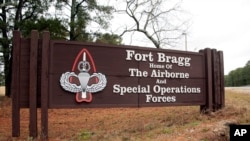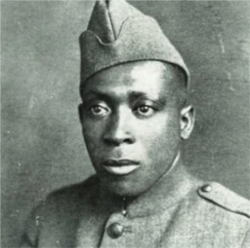As a young Black officer, Troy Mosley arrived at Fort Benning in Georgia in 1995 where he eventually took command of a 300-person company at the age of 31. The irony of leading hundreds of troops at a world premier military base named in honor of a Confederate officer who fought to defend slavery was not lost on him.
“It was kind of a peace offering to the defeated Confederates that we will allow you all to have some dignity and some honor in noble defeat,” says Mosley, now a retired lieutenant colonel and author. “But what it said to me as a Black American and a Black army officer was that my inclusion was not as meaningful or as important, and therefore, I was an American by grace only, but not really welcome at the table.”
More than 20 years later, Fort Benning is among nine military installations in the American South, all named after officers who fought against the United States in the Civil War, that is likely to be renamed. A congressionally mandated commission has proposed new names for the bases.
Fort Benning would become Fort Moore, named after Lieutenant General Hal Moore, who served in Korea and Vietnam, and his wife, Julia, an advocate for military families. During the selection process, some pushed to rename Fort Benning after Roscoe Robinson Jr., the first African American four-star general, who served in Korea and Vietnam. Mosley thinks the naming commission steered away from that to avoid potential pushback.
“There are elected officials that criticize the military for being ‘a woke organization,’” says Mosley, who is president of a group called Citizens Against Intolerance. “I think that a lot of that criticism comes from elected officials who've never served a day in the military, and they don't understand that the military has the structure, the bones, of America's greatest meritocracy. You have people from all walks of life who come together for a shared belief in a system of governance, and they're willing to put their lives on the line to defend that.”
The proposal would rename the Army installations for a diverse group of people including women, African Americans, a Latino and a Native American.
Fort Lee, Virginia, named for General Robert E. Lee, commander of Confederate troops, would become Fort Gregg-Adams in honor of retired Lieutenant General Arthur Gregg, who served in Korea and Vietnam, and Lieutenant Colonel Charity Adams, who served in World War II. Both are African American.
Fort Hood, Texas, named after Confederate General John Bell Hood, would be renamed Fort Cavazos, after Richard E. Cavazos, the first Hispanic American four-star general.
Fort A.P. Hill, Virginia, named for Confederate General Ambrose Powell Hill, would become Fort Walker, in honor of Dr. Mary Walker, the Army’s first female surgeon who received the Medal of Honor for her Civil War service.
Fort Pickett, Virginia, named for George Pickett, a Confederate major general, would be renamed Fort Barfoot, after Technical Sergeant Van T. Barfoot, a Native American who received the Medal of Honor after fighting off Germans during World War II.
“I think the military is trying to show that the new names reflect military values, and one of those values is diversity and unit cohesiveness; that we have people of all kinds serving in the military,” says Jeff South, retired associate professor at Virginia Commonwealth University, “and that having bases named just after white men, especially white men who fought against freedom for African Americans and against the U.S. Army itself, is offensive on several levels.”
Other Defense Department properties named after Confederate figures could also be changed. The commission is reviewing the names of more than 750 military assets, including streets and signs, to see if they should also be changed.
The renaming commission’s final report is due to be presented to Congress in October. In keeping with the 2021 National Defense Authorization Act, the defense spending legislation that created the panel, Defense Secretary Lloyd Austin must implement the recommendations by January 2024.
“There is some thinking that Congress might get cold feet, especially after the midterm elections, depending on who controls the House and Senate,” South says. “So, it's not quite a done deal yet. But because it was a bipartisan vote earlier, the thinking is that Congress will go ahead and affirm what the renaming commission has proposed.”
For his part, Mosley says he’s proud of the military for recognizing the strategic, operational and practical importance of diversity.
“We can't stay the same and become better simultaneously. Improvement requires change, and I think that the changes that the military has embraced to become a more inclusive organization only serves to make them better,” he says. “And I think that in doing so, they will not only make for a more lethal and more effective armed service, but they will also establish themselves as an institution for other organizations to emulate.”










